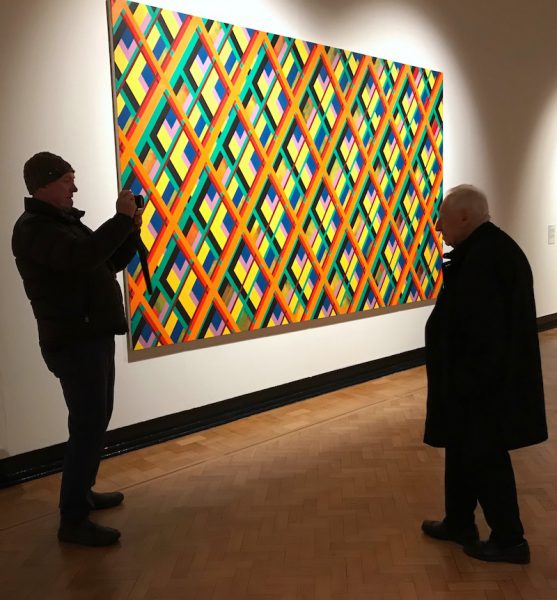The new Sean Scully show in Newcastle is spread over two galleries, the Laing and the Hatton, and contains no new work. In fact, very much the opposite, it takes one back to the very beginnings of his career, in the early 1970s, when he was just ‘emerging’ into the art world, from his time as a student at Newcastle University.
I was surprised by how solidly self-confident it still seems, and how consistent it is stylistically – ELS
The show contains one painting that is very familiar to me. Entitled Red Light, it won a minor prize at the John Moores Liverpool exhibition of 1972. To declare an interest: I was the jury member who picked out this work, insisted on the award, and made sure that the painting was prominently hung. Scully was born in 1945 and had made a beginning in art seven years previously, at the age of 20. This was his first success.

Looking at the work of this period now, I was surprised by how solidly self-confident it still seems, and how consistent it is stylistically. It doesn’t look greatly like the art Scully is producing now, apart from the fact that the paintings are consistently abstract, with no visible figurative references. However, if you look hard enough, you might perhaps see hidden references to the grid patterns of the great bridges spanning the Tyne that are a conspicuous feature of Newcastle’s urban landscape.
The layered grids from which the paintings are constructed often produce quite strong optical effects – the painted surfaces shift as you look at them, coming forward and simultaneously going back. In this respect, they have some links to the Op Art movement that flourished in the 1960s. This is not a route than Scully pursued. No-one, looking at his later abstractions, would describe him as being part of the Op tradition. The paintings of this period are also much tighter in handling than his later work. They are aggressive – their intention is to punch you in the face. You see a talent there that is like a coiled spring. I suppose it may have been this aggressive, demanding, look-at-me quality that caught my attention when I was a John Moores juror. Among the mass of other submissions, it was this confident forcefulness that made Scully’s offering stand out.
The drawings that accompany the paintings in the two venues are surprisingly different. There are even one or two, dated in the mid-to-late 1960s, that might actually qualify as figurative. They are much freer in handling. You might even call some of them meandering. They are the work of a young artist exploring, trying to find out who and what he really is. In this sense I find them fascinating – a good deal more vulnerable than the finished canvases, they evoke feelings of empathy. You as spectator and Scully as artist are here hand in hand following a path, not knowing quite where it is going to lead you.
I thought this exhibition, very professionally presented by the two galleries concerned, was one of great fascination. You see in it, yes, the beginnings of a stellar international career. No originally British-based artist of Scully’s generation – a clumsy phrasing, but Scully is a man of Irish descent who has long left these shores, and who is now an American citizen – has had anything like his degree of recognition. But the two Newcastle shows also let you get up close and personal with a major talent, just when it is beginning to recognise its own strength.
Sean Scully 1970 – Laing Art Gallery and Hatton Gallery Newcastle Until 28 May 2018

